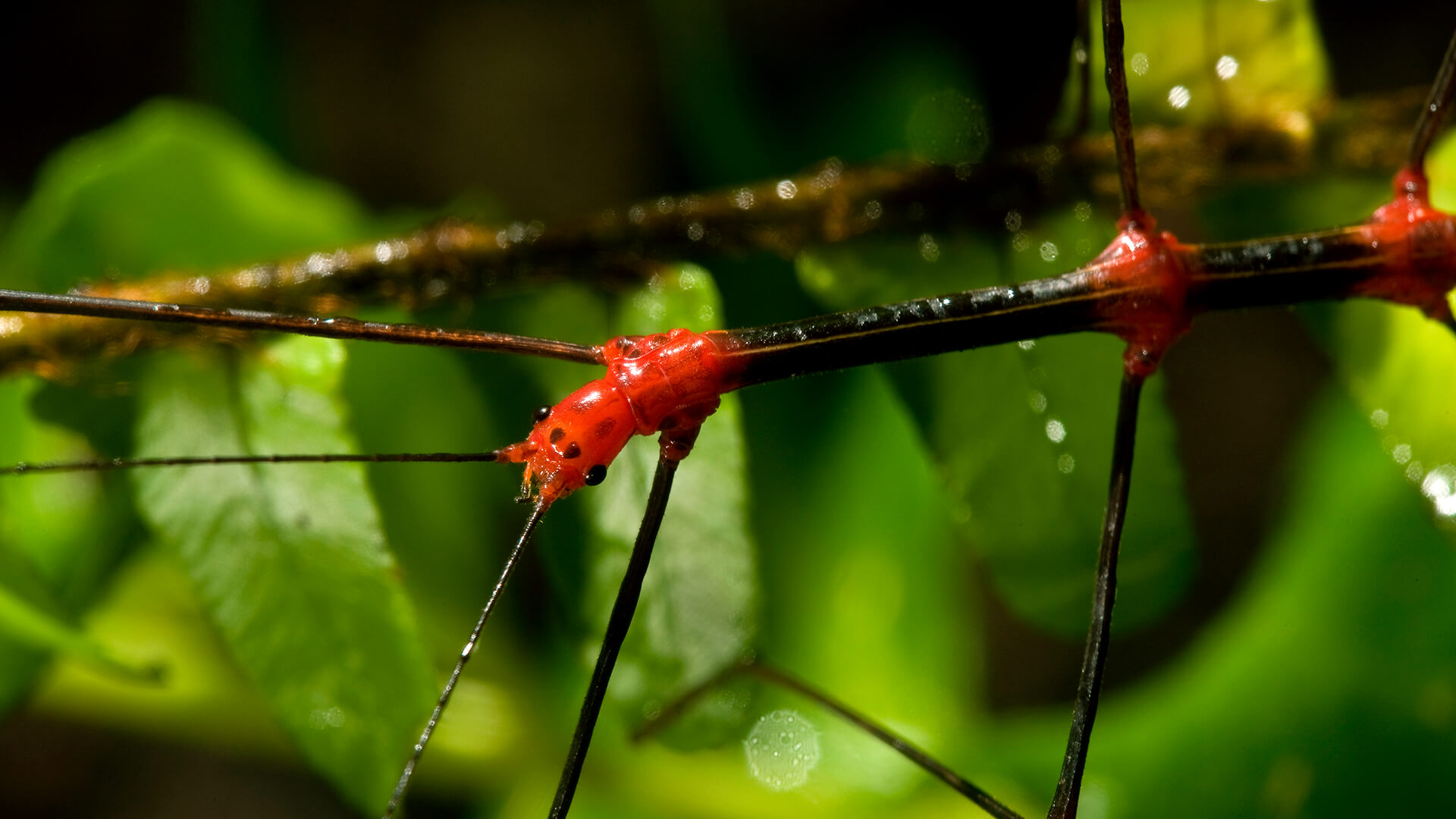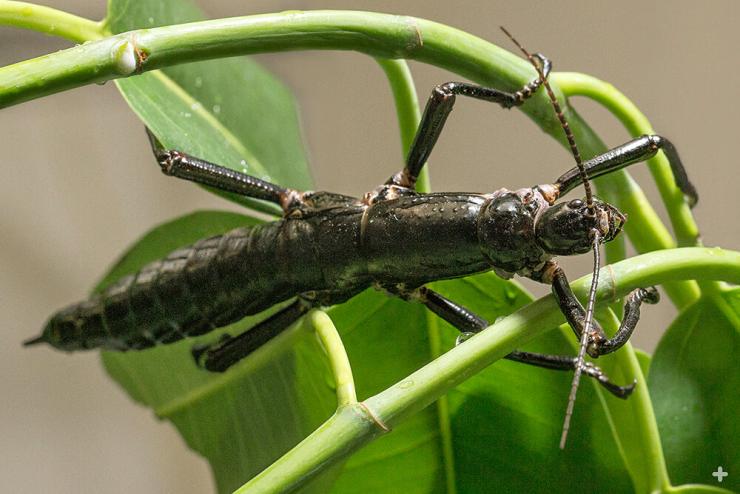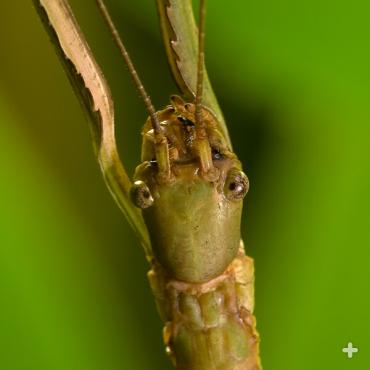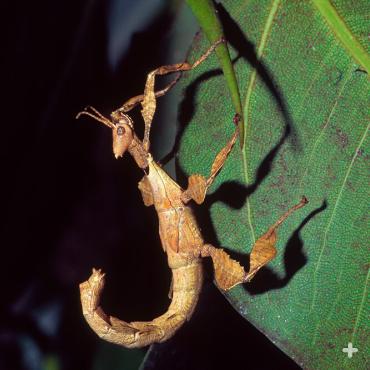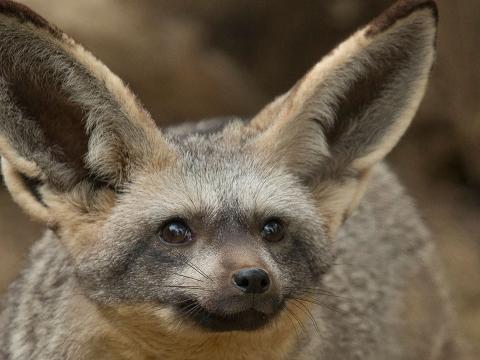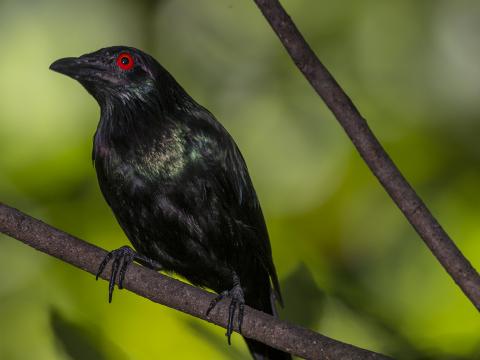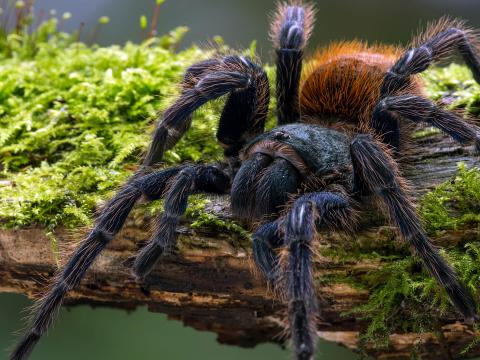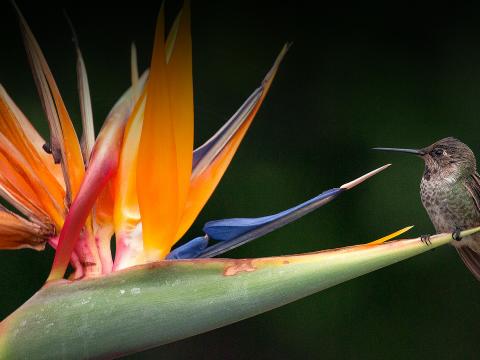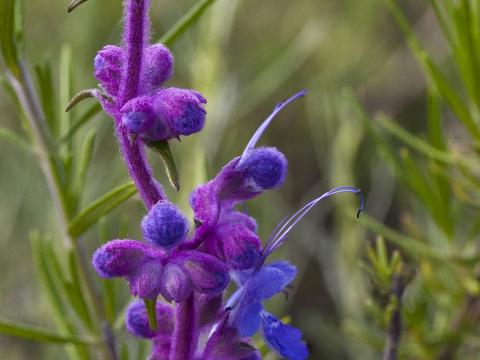Stick Insect
- CLASS: Insecta
- ORDER: Phasmida
- FAMILIES: Highly variable; entomologists are still working on grouping these insects
- SPECIES: Around 3,000
ABOUT
Masters of disguise: Stick insects, as their name implies, are insects that have taken camouflage and imitation to the extreme by developing the appearance of a stick, leaf, or twig. Typically, these insects are shades of brown, although some may be green, black, gray, or blue. When camouflage is not enough, some stick insects use active forms of defense to handle predators. For example, Eurycantha calcarata can release an awful-smelling substance as a deterrent. Others have brightly colored wings that are invisible when folded against their body; when they feel threatened, they flash open their wings, then immediately drop to the ground and again hide their wings. The predator is often confused as it searches for a brightly colored insect but sees only a pile of drab, brown sticks on the ground!
Other defenses are easier to spot, as with the Peruvian fire stick. It releases a milky white substance that is an irritant to predators. As a result, they have the memorable red, black, and yellow colors of a distasteful—or disagreeable—insect.
HABITAT AND DIET
Stick insects are found on all continents except Antarctica.They live in tropical forests and woodlands throughout the world.
You might think that stick insects hide among sticks on the ground, hoping to blend in, but most stick insects are usually found sitting right out in the open within the leaves of a tropical tree. They usually stay perfectly still, but when they need to move, they are even able to camouflage their motion. It is common to see them walk in a swaying motion, pretending to be a twig caught by the wind. Other stick insects have lichen-like outgrowths on their bodies that help camouflage them on tree bark.
Because stick insects make a very nutritious and filling meal for many birds, reptiles, spiders, and primates, they are mostly nocturnal so as not to be found so easily. Even though stick insects can sometimes avoid diurnal predators, they are not safe from bats. Echolocation used by bats can help them hone in on the tiny noises made by stick insects for a tasty meal. The stick insects’ elaborate camouflage doesn't help them in the dark. It's a good thing bats are not fooled by stick insect camouflage; without bats to eat them, we could find ourselves living a little too close for comfort with millions of stick insects!
Stick insects are herbivores that munch on leaves with their powerful jaws, called mandibles. Their droppings contain broken-down plant material that becomes food for other insects.
FAMILY LIFE
Who needs males? One of the most interesting things about stick insects is their ability to reproduce parthenogenetically. This is a form of asexual reproduction where the unfertilized females produce eggs that hatch into females. If a male fertilizes the egg, it has a fifty-fifty chance of turning out male. If no males are around, the line continues with females only.
You've probably realized by now that stick insects have developed adaptations to fool predators. Clever ways to lay eggs are also included in their bag of tricks. Female stick insects use two main methods of laying eggs: dropping them on the ground or placing them in a hard-to-reach place. Some stick insects drop one egg per day during their daily travels. These eggs are commonly small and resemble seeds. By dispersing her eggs far and wide, the female prevents a predator from lunching on a cluster of her eggs.
Other females lay their eggs in places that are hard for predators to find. For example, some stick insects lay eggs in the soil, in hollow parts of plants, or glued to bark or the underside of leaves. The types of stick insects that lay their eggs underneath leaves tend to hatch faster than those that lay eggs elsewhere, as the eggs need to hatch before the leaf falls off the tree and exposes the eggs!
Most stick insect eggs are covered by a hardened shell or capsule with a node called a capitulum on one end. The capsule of some stick insect eggs contains fats and other goodies that lure ants. The ants bring the capsule underground into their nest, remove the capitulum, and feed on the nutrients it contains. After they are done eating, the ants toss what's left, which includes the stick insect egg, in their nest garbage dump area. The egg incubates in the safety of the ant nest, out of sight of predators. A few months later, the all-but-forgotten hatchling makes its way out of the ant garbage dump!
No matter how their egg is laid, stick insect hatchlings, called nymphs, hatch from the egg as miniature versions of adults. They then go through successive molts to eventually reach adult size. This process is called incomplete metamorphosis: egg, nymph, and adult. Molting happens when the old exoskeleton is shed, and the larger body that had grown inside it expands and hardens into a new one. The time between molts is called an instar.
CONSERVATION
All stick insects are vulnerable, due to human encroachment, pesticides, and habitat destruction. The Lord Howe Island stick insect Dryococelus australis is critically endangered. The Melbourne Zoo has been successfully rearing them for several years, and the San Diego Zoo is working closely with the Melbourne Zoo to establish a satellite colony. Invertebrate care specialists are rearing the insects in an off-view area.
By supporting San Diego Zoo Wildlife Alliance, you are our ally in saving and protecting wildlife worldwide.

